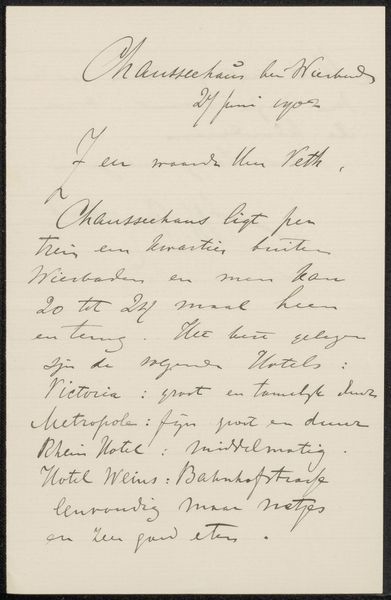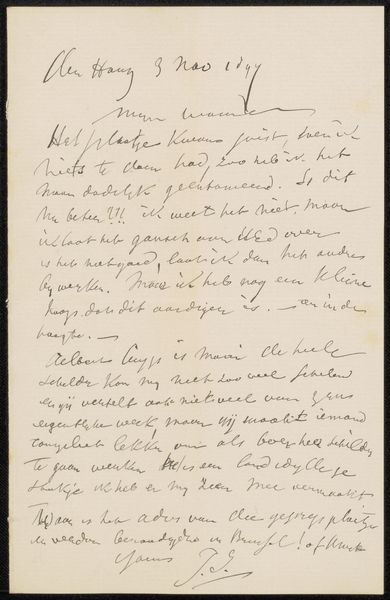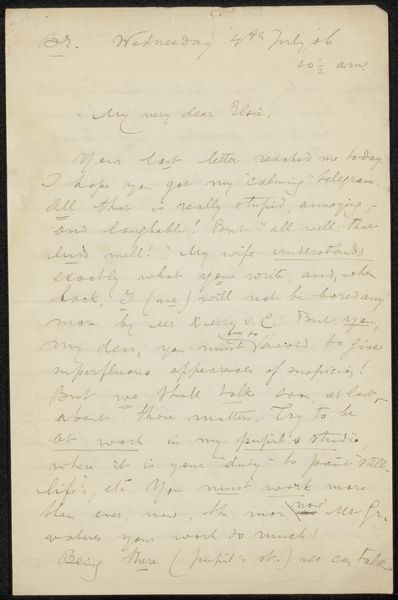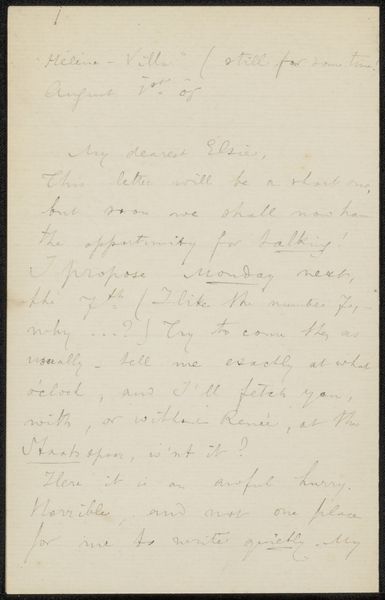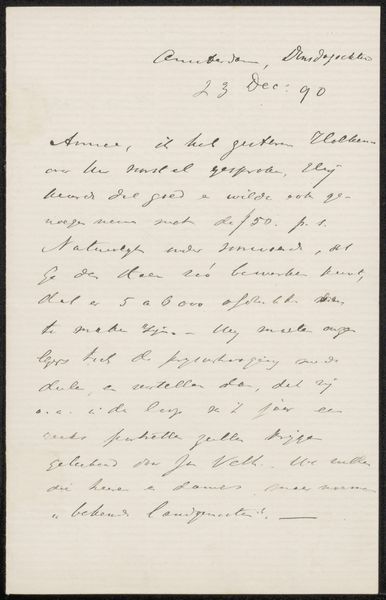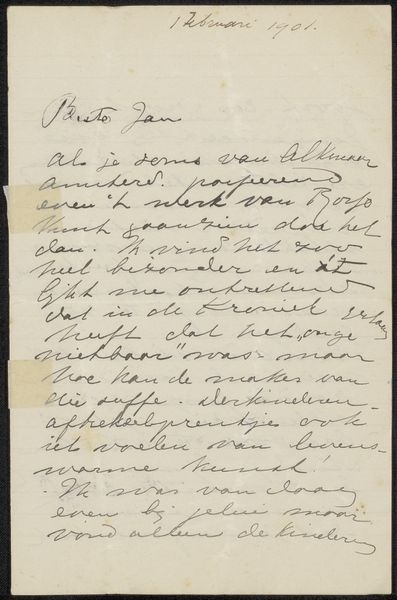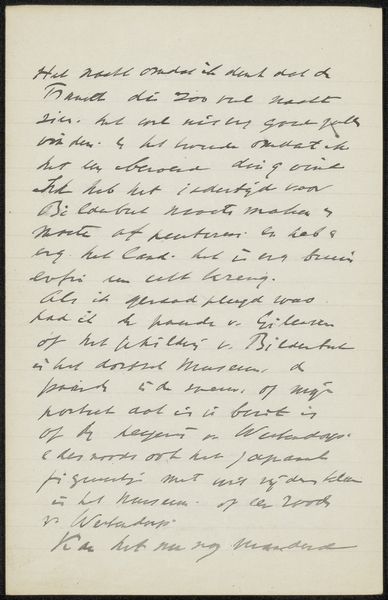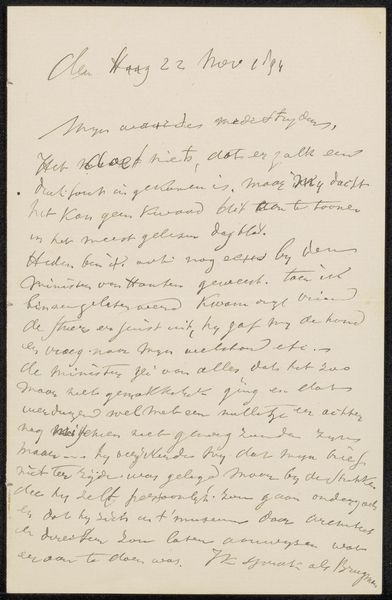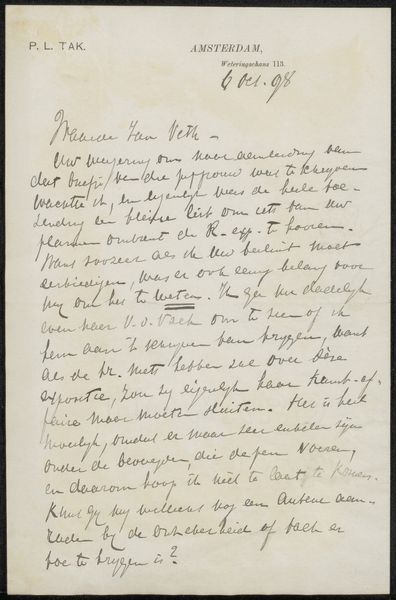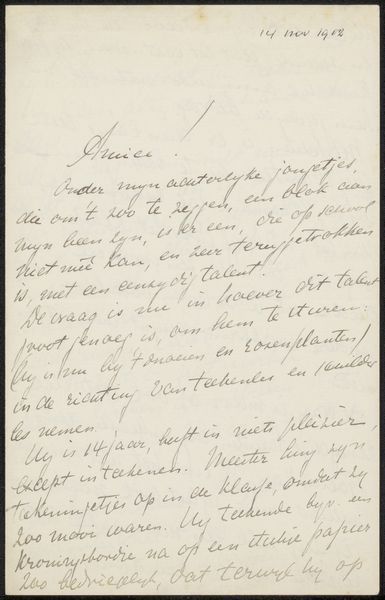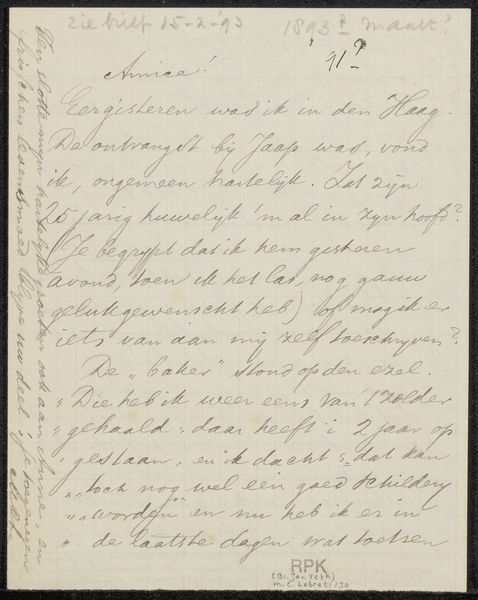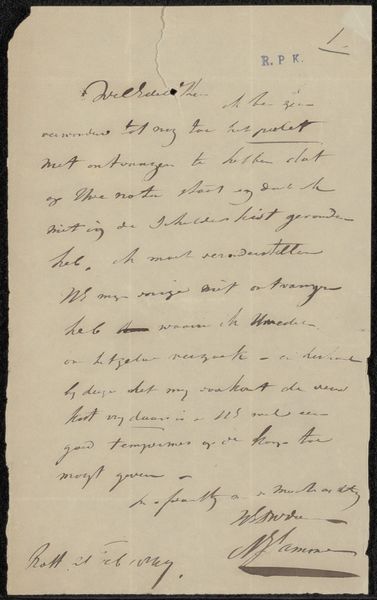
drawing, paper, ink, pen
#
drawing
#
pen sketch
#
paper
#
personal sketchbook
#
ink
#
pen work
#
pen
Copyright: Rijks Museum: Open Domain
Curator: This drawing, dating back to possibly 1896, is entitled "Brief aan C.C. Delprat," created by Johannes Martinus Messchaert. We believe it's executed in ink on paper. What strikes you immediately? Editor: There's a sense of urgency. It’s interesting to see handwriting given status of a "drawing", with its dynamic line quality and uneven textures... it conveys a feeling of intimacy that transcends mere information. This is personal. Curator: Indeed, the letter itself becomes the artwork. The swiftness of the pen work suggests an immediacy—Messchaert's thoughts poured directly onto the page. Note the formal elements; the script is quite elegant, despite its hurried nature. Consider the careful spacing and arrangement of the text as compositional choices. Editor: Given the date, this was likely a business or personal communication shaped by its historical and social moment. Perhaps the content reflects specific economic pressures, family matters, or access to transportation. As someone living nearly a century after the letter's conception, there's an inherent inaccessibility to its precise cultural context that is deeply affecting, even alienating. Curator: Precisely! And if we examine the individual strokes—thickening, thinning—the work becomes abstracted. Meaning dissipates into form, emphasizing pure line and tone. See how the darker areas create focal points, leading the eye through the composition, and the subtle rhythm present in each stroke. Editor: But doesn’t stripping away its context reduce it to pure aesthetics, thereby negating the vital essence of communication it clearly held for both the writer and the recipient? This tension speaks to the complexities of representing history—how context shapes perception. What’s excluded becomes as vital as what’s present. Curator: A fair point, yet the letter transcends its direct, contextual purpose, becoming something beautiful purely in its execution. That tension, perhaps, elevates it. Editor: For me, the real significance of Messchaert’s piece lies in the potential for sparking dialogues that acknowledge the interplay between the past and our own contemporary experiences and positionalities. The materiality of the handwritten letter reminds us how those lines of communications and their traces affect us to this day.
Comments
No comments
Be the first to comment and join the conversation on the ultimate creative platform.
